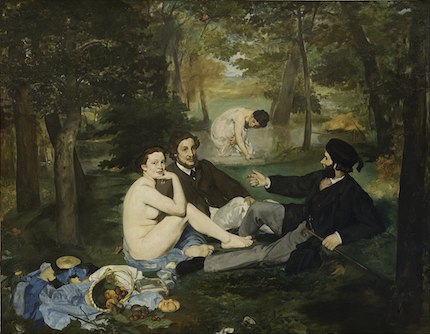|
KYSO Flash ™
Knock-Your-Socks-Off Art and Literature
|
|
|||
The Emperor’s Tailor Goes to Parisby Harriot West—Inspired by Manet’s Le Déjeuner sur l’herbe He didn’t fool her. She knew the emperor was naked despite that story about his fancy new suit. But she was convinced she had enough panache to carry off a similar stunt. And she almost did. She tracked down his tailor who was hanging out in Lyons near La Croix-Rousse. He’d grown weary and pudgy on a diet of quenelles de brochet, so when she offered him the lure of Parisian boulevards along with a chance to design a smashing new gown, he hopped on the next train. And he didn’t disappoint. The frock was magnifique! Perfect for a picnic in the Bois de Boulogne. Ferdinand kept caressing the fabric. “Soft as summer clouds,” he murmured. Eugene rhapsodized, “The color is perfection. Such a rosy hue.” And flâneurs in the park seemed equally enchanted. Until the reviews came in, she thought her ensemble was a succès fou but it turns out, not so much. Critics were scandalized. The Academy rejected her. And she ended up in the Salon des Refusés. A move that pretty much put the tailor out of business, but she loved the attention. Even her agent agreed—she couldn’t have paid for better publicity.
Publisher’s Notes:
|
|
Site contains text, proprietary computer code, |
|
| ⚡ Many thanks for taking time to report broken links to: KYSOWebmaster [at] gmail [dot] com ⚡ | |
